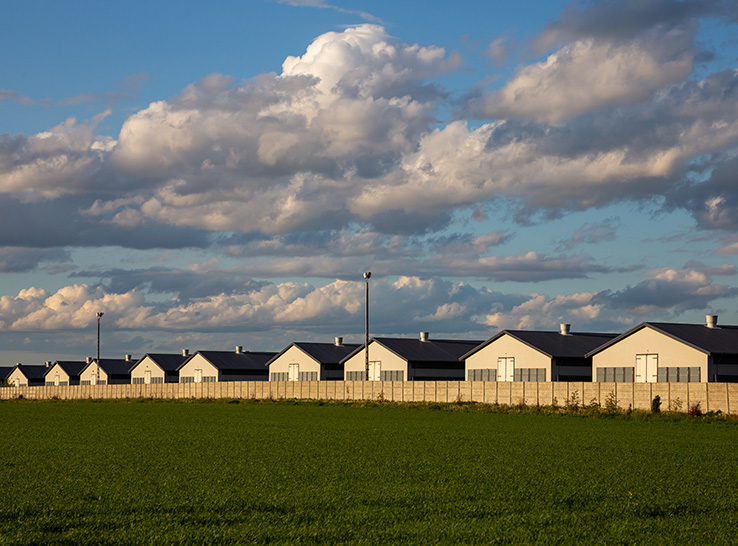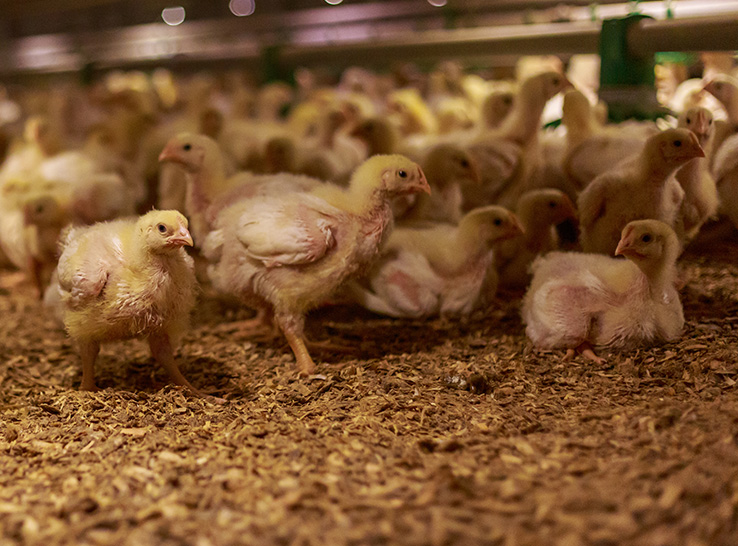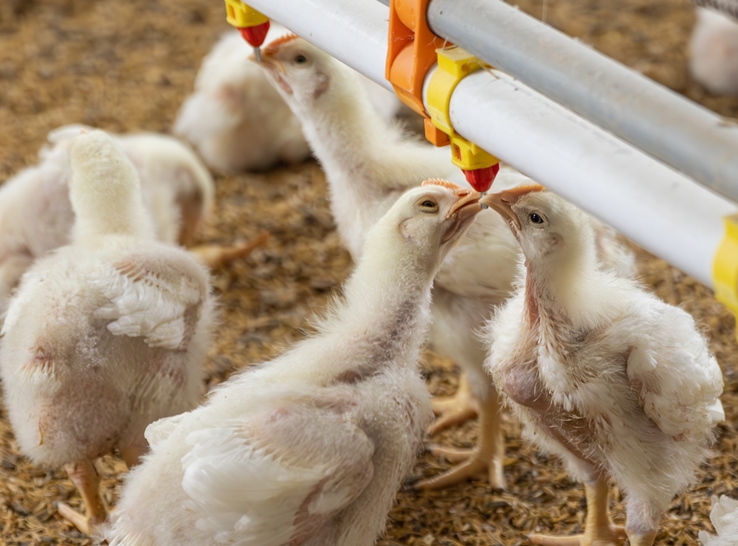Broiler chicks can be provided between 1 to 4 hours of darkness a day without negative consequences, according to a study led by scientists at the USDA Agricultural Research Service and Auburn University.
Their findings, published in The Journal of Applied Poultry Research, address the practice of rearing chicks with constant light during their first week of life. This practice is common due to the concern that chicks less than 1 week old may struggle to locate feed and water during dark hours.
Instead of seeing a drop in feed or water intake, the poultry scientists observed no differences, and they say providing a dark period could actually have added benefits for bird development.
Ample evidence
“Normal melatonin production and ocular development require a minimum of 4 h of darkness, yet photoperiod research in broilers has not typically examined the first week,” write study authors Magee et al.
“However, ample evidence exists that near-continuous light has detrimental effects on growth rate, feed intake, feed conversion, mortality rate, and welfare.”
The researchers studied a total of 384 Ross 708 broiler chickens over their first two weeks of life. The control group was exposed to 23 hours of light and 1 hour of darkness, and the experimental group was exposed to 20 hours and light and four hours of darkness over the first week. The control group was switched to 20 hours light and 4 hours darkness for the second week.
The chicks were provided housing in line with commercial broiler chick housing. They were stocked at a density of 10.7 birds/m2 and each pen was equipped with a tube feeder and nipple drinker line. Pens had an equal number of male and female chicks.
When it came to lighting, pens were lit with a single 10W LED bulb with a 5,000 K color temperature in each pen. Intensity was set at 30 lux from placement through day 7 and reduced to 10 lux from day 8 to 14.
The researchers uncovered no negative effects of dark periods on body weight (BW), body weight gain (BWG), feed intake (FI), or feed conversion ratio (FCR) at the conclusion of the two-week study period. As they note, performance during this early period is a reliable way to gauge a bird’s future growth.
“There is a direct correlation between the 7-day body weight and the body weight at slaughter,” write the study authors.
May reduce energy costs
Reducing light use can also benefit producers’ bottom lines. As the researchers note, “wide adoption of this practice may reduce contract producer energy usage and production costs associated with brooding at the complex/integrator level and improve sustainability.”
Going forward, the researchers recommend further study into light intensity and wavelength during a chick’s first 7 days.
What does this study mean for producers?
- Broiler chicks performance holds steady even when chicks are given four hours of darkness in their first week of life.
- Providing darkness may benefit a bird’s overall development and increase sustainability in poultry production.
The full paper, titled “Effect of photoperiod on live performance in broiler chicks from placement to 14-days-of-age,” can be found in The Journal of Applied Poultry Research and online here.
Editor’s note: Content on Modern Poultry’s Industry Insights pages is provided and/or commissioned by our sponsors, who assume full responsibility for its accuracy and compliance.








